The future Bishop Pavel was born on 02 Nov 1880 in Arkhangelsk, Russia, to a Deacon’s family. He attended the Arkhangelsk Seminary, a venerable institution founded in 1723, graduating in 1903. The seminary library was famous for its collection of 16th and 17th century manuscripts. It was closed by the Bolsheviks in 1920. According to “the advice of the Optina Elders,” Trofim Meletiev was tonsured a monk at the Solovki Monastery. He was surely familiar with the Solovki Monastery, as the Monastery had a podvorye located in Arkhangelsk. Subsequently ordained hierodeacon in 1909, and hieromonk in 1910, he was elevated to Igumen and appointed as Diocesan Missionary in the Russian Far North in 1916. [1]Епископ Павел Мелетьев. http://zarubezhje.narod.ru/mp/M_324.htm by Igumen Rostislav Kolupaev (Russian Catholic Church)[2]http://ru.wikipedia.org/wiki/Архангельская_Духовная_семинария
Igumen Pavel was arrested by the Soviet authorities in 1920, and received a death sentence, which was commuted to five years of hard labor. After his release, he travelled to Moscow, where he became acquainted with the Bishops Ioasaph (Shishkovsko-Drelevsky, +1935), a vicar of the Maloyaroslavets Diocese, and Pavlin (Kroshechkin, shot 1937 in Kemervsky Camp), ruling bishop of the Kaluga diocese. He “assisted these two Bishops in their ministry, and preached in Moscow, Serpukhov, and Kaluga.” For non-cooperation with the Soviet power, he was arrested again in 1931, and imprisoned in Butyrki, and subsequently sentenced to exile in Kazakhstan [other sources say hard labor in the Karaganda concentration camp] until 1937. From 1937 to 1941, he served as a Catacomb priest, secretively wandering here and there, often hiding from the authorities. His wanderings across the Soviet Union ended in Byelorussia, under the German occupation. [3]ibid., 1; http://kuraev.ru/smf/index.php?option=com_smf&Itemid=63&topic=564459.60; http://www.ortho-rus.ru/cgi-bin/ps_file.cgi?2_905
The German Occupation Forces in Byelorussia, as they did in Ukraine, allowed the opening of churches, and a renewal of church life. This relatively free, revived Church became known as the Byelorussian Autonomous Orthodox Church. Igumen Pavel assisted the renewal of church life in the Smolensk, Briansk, and Mogilev regions. [4]ibid., 1
The German Occupation Forces mistrusted an Orthodox Church in Belorussia that was in contact with any other Orthodox Church, as in all the territories they occupied. Totally opposed to what they saw as the Bolshevik controlled Moscow Patriarchate, and forbidding the clergy of both the Polish Orthodox Church and Russian Orthodox Church Outside of Russia to enter the occupied areas of the Soviet Union, the Germans supported the creation of an Autocephalous Church for Byelorussia. This was done to support Byelorussian nationalism as part of a “divide and conquer” strategy against the Soviets. The Germans had united Byelorussian territory that had been parts of both the Soviet Union and Poland. Byelorussian nationalists had been “imported” into occupied Byelorussia from Germany, where many had lived in exile. The Germans utilized these nationalists to aid them in governing occupied Byelorussia, and to encourage the creation of an Autocephalous Byelorussian Church. [5]Michael Woerl. The Life of Archbishop Gregory (Borishkevich). www.rocorstudies.org/test
In 1942, a local council of the Byelorussian Church was held in Minsk. Many of the nationalists the Germans placed in the Council were not church oriented in the least, but supported autocephaly for nationalistic reasons only. During this council, the creation of a Byelorussian Autocephalous Church was approved, despite the objections of Metropolitan Panteleimon (Pavel Stepanovich Rozhnovskii, 27 Oct 1867-12/30 Dec 1950) of Minsk & Byelorussia, and Archishop Filofei (Vladimir Narko, 21 Feb 1905-11/24 Sep 1984), Met. Panteleimon’s deputy, who served in his place during the Council. The Germans were aware of Vladika Panteleimon’s objections, and had him under arrest in the Zhirovitskii Monastery during the Council. As the decision was enacted during wartime, the hierarchs knew that little could be accomplished in a request for approval of a new autocephalous Church. Letters were composed to the Patriarchate of Constantinople asking approval. Would-could-these letters be delivered? No record exists of the receipt by, or any reply from the Patriarchate of Constantinople in relation to these letters. Since there was no approval of the autocephaly, the Byelorussian Church of the German occupation era has become commonly referred to as the Byelorussian Autonomous Church. (After the War, in the West, a small “Byelorussian Autocephalous Church” came into being, solely on the authority of the Council of 1942 in Minsk. It exists to this day, divided into two or three factions.) Technically considered as autonomous under the ultimate jurisdiction of the Moscow Patriarchate, there was little or no contact between the Byelorussian Church and the Moscow Patriarchate during the era of German occupation; it was strictly forbidden, and, as well, would have involved traversing battle lines. Despite being forbidden by the German occupation forces, there was contact and cooperation between the Byelorussian Church and the ROCOR. [6]ibid., 5
In October 1943, the Council of Bishops of the ROCOR met in Vienna, Austria. The primary reason for the meeting of the Council of Bishops was the declaration that the election of Metropolitan Sergey (Ivan Nikolaevich Stragorodskii, 11 Jun 1867-02 15 May 1944) as Patriarch of Moscow and All Russia was to be considered as “null and void.” Bishop Venedikt (Bobkovskii, 28 Feb 1876-21 Aug/03 Sept 1951) of Grodno, and Archimandrite Gregorii (George Borishkevitch) from the Byelorussian Autonomous Church also attended the Council, during which Archimandrite Gregory was consecrated as Bishop of Gomel & Mozyr’ for the Byelorussian Autonomous Church. ROCOR Hierarchs attending the Council, and participating in the consecration, were: Metropolitan Anastassy (Alexander Alexeevich Gribanovsky, 06 Aug 1873-09/22 May 1965), First Hierarch of the ROCOR; Metropolitan Seraphim (Alexander Ivanovich Lukianov, 23 Aug 1879-18 Feb 1959) of Paris & Western Europe; Metropolitan Seraphim (Albert Lade) of Berlin & Central Europe; Bishop Sergey (Arkady Dmitrievich Korolev, 18 Jan 1881-18 Dec 1952) of Prague (a Vicar of Metropolitan Evlogy, by German law under the jurisdiction of Met. Seraphim of Berlin during German rule of Czechoslovakia, who afforded Bishop Sergey a relatively free rule over his parishes); Bishop Vasily of Vienna (Vasily Gavrilovich Pavlovskii, 21 Nov 1880-1945); and Bishop Philip (Johann von Gardner, 09 Dec 1898-26 Feb 1984) of Potsdam (both vicars of Met. Seraphim of Berlin). The Germans allowed the participation of the Byelorussian clergy to bolster the condemnation of the election of Patriarch Sergey, but, in doing so, also confirmed the cooperation between the Byelorussian Autonomous Church and the ROCOR. [7]ibid., 5
On 7 Oct 1943, Igumen Pavel was consecrated to the Episcopate as Bishop of Roslavl’sk, Vicar of Bishop Stefan (Simeon Iosifovich Sevbo, 17 Apr 1872-25 Jan 1965, later ROCOR Archbishop of Vienna & Austria) of Smolensk & Briansk. The consecration took place in the Metropolitan Cathedral in Minsk, presided over by Metropolitan Panteleimon (Rozhnovsky), concelebrating with Archbishop Filofei (Narko), and Bishop Venedikt (Bobkovsky). [8]ibid., 1[9]http://www.ortho-rus.ru/cgi-bin/ps_file.cgi?2_5632; http://www.ortho-rus.ru/cgi-bin/ps_file.cgi?2_942
In June 1944, the entire episcopate of the Byelorussian Autonomous Church fled west to escape the swiftly advancing Red Army. The Byelorussian Hierarchs eventually found their way to Germany, along with many members of their flock. Meeting in Council in Dec 1944, Metropolitan Panteleimon insisted that their only possible course of action was to seek unity with the Russian Church Abroad. The Byelorussian Hierarchs, including Bishop Pavel, unanimously followed Metropolitan’s Panteleimon’s advice. Bishop Pavel, after travelling through Czechoslovakia, Austria, and Germany, upon arrival in Munich, “sought assistance from Metropolitan Anastassy of the ROCOR.” [10]ibid., 5[11]ibid., 1
On 24 Apr/07 May Apr 1946, a Hierarchical Council of the ROCOR was held in Munich. Hierarchs of the Byelorussian and Ukrainian Autonomous Churches were accepted into the ROCOR. During a session of the Council, after all the Byelorussian Bishops-except Bishop Pavel-had been officially accepted into the Church Abroad, Bishop Pavel was questioned about his leanings towards the Roman Catholic Church. The questions turned out to be unwelcomed, and Bishop Pavel walked out of the Council. [12]ПРОТОКОЛ №1, АРХИЕРЕЙСКОГО СОБОРА РУССКОЙ ПРАВОСЛАВНОЙ ЦЕРКВИ ЗАГРАНИЦЕЙ, 24апреля/7мая 1946 года. http://www.rocor-dv.ru
The proceedings of the Council during the questioning of Bishop Pavel are fascinating, giving a look, as it were, “behind closed doors,” into the Council chamber. Perhaps most interesting was Metropolitan Anastassy’s roles an impartial moderator, peacemaker, diplomat, and chairman.
Attending were: Metropolitan Anastassy, First Hierarch of the ROCOR; Metropolitan Seraphim of Berlin & Germany; Archbishop Panteleimon (Rudyk, Ukrainian Automous Church UAC); Archbishop Venedikt (Bobkovsky, Bielorussian Automous Church BAC); Archbishop Filofeli (Narko, BAC) Bishop Leonty (Phillipovsky, UAC); Bishop Afanassy (Martos, BAC); Bishop Stefan (Sevbo, BAC); Bishop Evlogy (Markovsky, UAC;) Bishop Dimitry (Magan, UAC); Bishop Fyodor (Rafailsky, UAC); Bishop Gregory (Borishkevich, BAC); Bishop Alexander (Lovchy, ROCOR); Bishop Seraphim (Ivanov, ROCOR); and Bishop Pavel (Meletiev, BAC) . The Council began at 10:30 a.m. with prayers in the Synodal Church with all the bishops present. The first subject under discussion in the Council was to be the composition of the Council. The Hierarchical or Bishops Council is composed of all the Bishops of a given Church. At that time, the only Bishop who had not been officially accepted into the ROCOR was Bishop Pavel. Since the Bishops of the Byelorussian Autonomous Church had met in Council in Munich in Dec 1944, deciding to join themselves to the Church Abroad, and since they undoubtedly had all been working and serving together since that time, it was certain that Bishop Pavel, too, would join his brother bishops. The subject of the ‘composition’ of the Council, therefore, centered on Bishop Pavel.
“Metropolitan Anastassy noted that Bishop Pavel had not yet officially joined the Church Abroad, that there needed to be some discussion on the issue, and asked that Bishop Pavel leave the room until this discussion was completed. Bishop Pavel protested this request, but, after some opposition, withdrew.
Metropolitan Anastassy, after some discussion on historical aspects of the Church Abroad, asked for a decision about Bishop Pavel. Archbishop Venedikt stated that Bishp Pavel should not be allowed to join the Council until he swears fidelity to the Orthodox Church. He further mentioned that Bishop Pavel spoke at the meeting of the Diocesan Charity Committee in favor of ‘a connection with the pope.’ Metropolitan Seraphim, who had presided at the Charity Committee meeting, further stated that Bishop Pavel had caused total confusion at the meeting, stating that the most important is forgotten: ‘that we all should be one,’ and that ‘our efforts are doomed to failure because we break the commandment of prayer.’ At that point, Bishop Pavel was stopped, and asked to speak on the work at hand. He did not, but went on, and said that ‘We are separated from Rome because of adversity,’ and suggested a telegram to the Pope saying that, ‘We mourn because we are not in communion with Rome.’ Archbishop Filofei and several other bishops vouched for the correctness of the description of what Bishop Pavel had said. Bishop Afanassii then related that a priest had come with a story that Bishop Pavel had received ‘some sort of letter from Rome.’ Archbishop Venedikt reiterated that some sort of declaration need be composed and signed by Bishop Pavel, stating that he is not converting to Catholicism, and until that declaration, and his official acceptance, he should not be able to participate in the works of the Council. Metroplitan Anastassy then stated that it could have been a mistake, Bishop Pavel may have not been clearly elucidating his ideas, and that he needed to be given a chance to explain.
Bishop Pavel was called back into the Council, and Metropolitan Anastassy explained to him, ‘first of all,’ to keep to a peaceful tone, and that his remarks at the Charity Committee meeting caused the other bishops to think he was ‘criticizing the Orthodox Church because it is not in communion with Rome. That is the source of our unhappiness.’ Bishop Pavel declared that, in going to the meeting, he had no intention whatsoever of bringing up the subject. Then, Metropolitan Seraphim had offered to thank the Pope (for charitable contributions) and Archbishop Venedikt had commented, ‘It’s not necessary.’ Bishop Pavel said that he then stated that ‘Christians should live in peace, love and harmony, and we should live in peace with non-Orthodox Christians, and strive to achieve the unity of the Church.’ He went on to say that he had been speaking generally, had not made mention of any methods, had not called for Uniatism, had not suggested anyone come into union, and had not suggested that anyone become a traitor to the faith of their fathers. He did say he asked at the meeting for a telegram of thanks to the Pope for his assistance, that the meeting encouraged feelings of unity, and should go towards unity, and that the issue needed to be studied and ‘developed.’ He said he had not ‘developed this theme any further at the meeting.’
Bishop Pavel continued, mentioning that he had heard that some of his brother Byelorussian Bishops were ‘embarrassed,’ and that their confusion is due to a misunderstanding or one-sided understanding of the issue of the unity of the Church. ‘Nikolaev is giving a lecture on Rome, and tries to show that the Pope is the enemy of Orthodoxy. I do not share this sentiment, I am for rapprochement with Rome, I am not afraid of the Pope, and if the day came for talks, I would not yield one jot to him.’ Bishop Pavel was upset that the priest in question (who had mentioned that Bishop Pavel had received a letter from Rome) had refused to serve with him, and had asked him, ‘How much were you bought for?’ He said a priest has no business speaking to a bishop that way in public. He stated he had appealed to Archbishop Venedikt with Paschal greetings, and Archbishop Venedikt had responded by asking, ‘Are you Orthodox?’ Bishop Pavel concluded, stating that he felt both wronged and disappointed.
Archbishop Venedikt then spoke, stating that the speech delivered by Bishop Pavel at the Charity Committee meeting had given all the Byelorussian Bishops the distinct impression that he was ‘a supporter of Rome.’ Further, he stated that there were reports that Bishop Pavel had joined the unia, and a newspaper had reported that a Byelorussian bishop had converted to Catholicism. The Byelorussian bishops had all been sure it was Bishop Pavel who had converted. Archbishop Venedikt explained that he had not greeted him immediately, he needed to know the truth, and how to proceed-that’s why he asked the question. ‘If he is not Judas, I would be glad to welcome Bishop Pavel.’
Bishop Seraphim spoke of the desirability to ‘dot the i‘s.’ ‘Bishop Pavel stated that the Pope did not want to make changes in the Orthodox Church, and if he had entered into the canonical liturgical communion with him, it’s nothing. Eastern Rite Catholicism retains all the Orthodox doctrines, but with obedience to the Pope. It would be important to know whether this is something that has been offered to Bishop Pavel.’
Bishop Pavel stated that he was not a recipient of any offers, and had not engaged in any negotiations. He had asked to put forth the question of the connection and unity of churches thinking only about how to banish enmity. Metropolitan Anastassy observed that ‘this issue is beyond the competence of the Church Abroad. If Bishop Pavel, as he says, does not admit any canonical or doctrinal concessions, it should not be difficult to provide the written statement asked for by the Council. This was done in ancient times, and in this case, it is required.’
Bishop Pavel added that the air of distrust reminded him of the GPU. Bishop Dimitrii stated that he did not understand why it was difficult to meet in fraternal union with the Bishops, and that he would gladly submit such a document. Bishop Pavel said he still considered the request for such a statement as ‘an insult.’ Bishop Gregory said that he knew his fellow Byelorussian Bishops thought that Bishop Pavel had, indeed, converted to the unia, but that he himself did not. He went on to say that he believed in the unity of the Church, but that to submit to Rome and recognize the primacy and infallibility of the Pope would be ‘a retreat from the truth. I don’t see any humiliation in submitting the required statement.’ Bishop Pavel continued to insist that the claims presented did not justify asking him for such a statement. Metropolitan Anastassy responded that the signed statement is to reassure not only the Bishops, but, ‘also public opinion.’ Bishop Pavel countered that his signature on a statement was worthless, and that he would answer the charges in a series of public lectures. Metropolitan Anastassy replied that since the Council had unanimously decided to require the written statement, that if it was not supplied, it would be impossible for Bishop Pavel to participate in the Council. Bishop Pavel refused, said, ‘I need to pray,’ and left the Council.” [13]ibid.
Subsequently, Bishop Pavel received assistance from the German Roman Catholic Bishop Michael Buchberg. Later in 1946, Bishop Pavel, along with his sister, Igumenia Seraphima (Meletieva), were received into the Roman Catholic Church. Relating this turn of events, Bishop Pavel stated, “Adherence to the Universal Church, united to the Holy Apostolic Roman Throne, was, for me, my greatest joy in exile, and the most important step in the way of my ministry, Christ, Church, and Homeland.” After settling in Western Europe, Bishop Pavel explained that his “interest in Christian Unity, which has been with me from a young age, has increased.” He also stated that “our membership in the Catholic Church, and the jurisdiction of the Pope, is not subject to the waiver of any dogmas of the Orthodox Church.” [14]ibid., 1
“When the Germans began to retreat … , Bishop Pavel and his sister, a nun, Mother Igumenia Serafima, saw that exile was their only choice. Many adventures were in store for the two refugees, but God’s Providence accompanied them safely all the way to the end point of their journey – Rome. For some years, this sincere bishop had been led through prayer to believe in the necessity of being united with the Catholic Church under the Roman Pontiff. Indeed, the fulfilment of this desire had been the most serious reason prompting him to leave his beloved Russia.” [15]http://holyunia.blogspot.com/2009/04/bishop-pavlos-meletiev-1880-1962.html
“And so it came to pass on 21 September 1946 that the aged prelate humbly made his profession of the Catholic Faith into the hands of the Pope’s representative Cardinal Tisserant, receiving from Pope Pius XII the titular see of Heracleopolis.” [16]http://rumkatkilise.org/necplus.htm
Bishop Pavel became active in the ‘Russian Byzantine Catholic Church,’ a small group of Russian Catholic parishes, administered by an ‘Administrator’ or an ‘Exarch,’ who, historically, can be a Bishop or a priest. Bishop Pavel was never the ‘Exarch’ of the Russian Catholics, but a Bishop who served in their parishes. It is by no means, in adherents or status, the equal of large Uniate formations such as the Ukrainian or Melkite Eastern Rite Patriarchates. The genesis of the Russian Catholic Church is credited to one man, Vladimir Solovyov: “The Russian Byzantine Catholic Church traces its institutional origin back to the second half of the nineteenth century in Russia where the philosophy of Vladimir Soloviev (1853-1900) had fostered an active debate and interest among various circles of intellectuals in the notions of the universality of the church and Church unity.
According to Soloviev’s reasoning, the Russian Orthodox Church is separated from the Holy See only de facto (there was no direct formal breach between the Sees of Rome and Moscow), so that one can profess the totality of Catholic doctrine and be in communion with the Holy See while continuing to be Russian Orthodox. Soloviev was received into communion with the Holy See as a Russian Byzantine Catholic on February 18, 1896 by Fr. Nicholas Tolstoy, the first Russian Byzantine Catholic priest. Soloviev’s thought had a profound impact on several generations of Russian society and inspired such later thinkers as Fr. S. Bulgakov, Fr. P. Florensky, Fr. G. Florovsky, N. Berdyaev, L. Karsavin, the poet V. Ivanov, among others.
As a result of Soloviev’s thought a movement began among various intellectual circles, spanning the aristocracy, the intelligentsia, the growing middle class and later spreading as well amongst farmers and workers, that led various Russians to seek to be in communion with the See of Rome. At first they did this by being received into the Roman Catholic Church, but this solution left all but a few of them thirsting for the spiritual richness of the Byzantine Slavonic tradition.
This tendency began to change as the nineteenth century began to draw to a close. In 1893, Fr. Nicholas Tolstoy, a Russian Orthodox priest, was received into communion with the See of Rome and was incardinated in the Melkite Catholic church. He returned to Moscow and a small community began to form around him. A few years later, it was he who received Vladimir Soloviev into communion with the Holy See. Larger numbers of like-minded individuals began to form circles and communities in St. Petersburg and Moscow and among them were a number of Russian Orthodox clergy, as well as some Russian Old Ritualist or Old Believer priests.” [17]ibid., 15
It is of interest that, while many of the Uniate formations, as time passed, became increasingly Latinized, Pope Pius X commanded a “no Latinization” policy for the Russian Catholics: “On May 22, 1908 Fr. Zerchaninov was appointed the Administrator of the Mission to the Russian Catholics. The decree from the Vatican Secretariat of State appointing him specifically states: “Therefore His Holiness commands the aforementioned priest Zerchaninov to observe the laws of the Greek-Slavonic Rite faithfully and in all their integrity, without any admixture from the Latin Rite or any other Rite; he must also see that his subjects, clergy and all other Catholics, do the same.
Subsequently, this command to observe strictly the Russian Orthodox Church’s rituals and spirituality was confirmed during an audience with Pope Pius X attended by Mlle. Ushakova.
In response to Mlle. Ushakova’s inquiry whether the Russian Catholics should hold firmly to their Russian synodal and Old Ritualist practices, or adapt these to the more “latinized” Galician liturgical forms, Pope Pius replied that the Russian Catholics should adhere to the synodal and Old Rite practices with the now famous response in Latin: ‘nec plus, nec minus, nec aliter’ (‘no more, no less, no different’).” [18]ibid., 14
Bishop Pavel spent his time in “his beloved Rome and the visitation of various centres of Russian Catholics, particularly in Germany and Belgium. His, however, was rather a hidden and humble interior life. The dominating intention of all his prayer and penance in these last years was the conversion of his people to the Catholic Church. Perhaps the highlight of his life was the leading of a pilgrimage of some 500 Russian Catholics to Rome and Fatima for the Holy Year of 1950-1951, which terminated with his singing a Pontifical High Mass in his Russian Byzantine rite before the assembled crowds at Fatima.
In Rome, where the Russian pilgrims had assisted at the joyous celebrations marking the proclamation of the dogma of the Assumption of Our Lady, Bishop Meletiev had handed a petition to the Sovereign Pontiff on their behalf in which he, Bishop Evreinov (another convert from Russian Orthodoxy) and the Russian Catholics asked, on behalf of their beloved homeland, for the ‘special consecration of our country, Russia, which has suffered so much, to Our Lady the Queen of the World, that is, to Her Motherly and Immaculate Heart pierced by the sword … the deliverance of our country, followed by that of the whole world from the terrible slavery of Bolshevism, cannot be obtained by material forces of arms and money … the struggle taken against God and Holy Church by the Bolsheviks is not led by mere human powers. These forces have at their source Satan himself and the spirits of darkness. The evil is Satan, who has assumed the appearance of Marxist-Bolshevik atheism, and the force capable of overcoming it is our Holy Queen and protectress, the Mother of our God … But who can make this consecration in the name of Russia, which has been profaned and enslaved? We see only one solution, and we express it by our humble request. We ask that this consecration be done by the Vicar of Christ on earth, successor of the Prince of the Apostles, Peter, Sovereign Pontiff of the Universal Church, the Pope of Rome…” [19]ibid., 14
Bishop Pavel, “the first Orthodox Bishop to convert to Catholicism,” as claimed by Russian Catholics, moved from Germany to Belgium in 1948, living at the Catholic Monastery at Chevetogne. In 1951, he moved to Brussels, where he lived in the Salesian Institute. He participated in the Congress of Catholic Clergy gathering in Rome in 1950. The thorny issue of nationalism was raised, and Bishop Pavel remarked “The Russian people do not need a Russian shepherd, they need a Good Shepherd!” He moved into a house church in 1953 that eventually became the “Foyer Chretien Oriental and Eastern Christian Center,” which was instituted to serve as “a gathering place for Eastern Catholics, especially from the Slavic countries.” Another purpose was stated that the Center was “to serve the cause of Christian unity, develop fraternal relations between Orthodoxy and Catholicism, and to explore the spirituality and history of the Russian Church.” Approved by the Congregation for Oriental Churches and the Belgian Catholic Church, a Russian Catholic parish had its home in the Center. Bishop Pavel officiated over the first Liturgy served there in 1954. [20]ibid., 15
In 1956, Bishop Pavel participated in the Second Congress of Russian Catholics, where he served. The Congress also included reports on the various Russian Catholic parishes, and a clergy conference. Bishop Pavel delivered a Christmas message in 1957: “We live in terrible and dangerous times. Christians are persecuted. Scientists who are Christians are ridiculed. Christ is expelled from state and public institutions. Important decisions are made without prayer. Christian religion among Christian people is barely palatable. People are reticent to profess Christ as God and Creator of the world. Many Christians are Christians by name only, which is unworthy. Christians live according to the laws of the heathen. Christian rulers are silent when they hear about persecution and religious harassment; to maintain ’friendly relations,’ believers are denied assistance … Evil is growing, and no one wants to fight it. All this means that humanity is wrong, and close to eternal death. The Lord will come to judge the people …” [21]ibid., 1
In 1961, Bishop Pavel visited Rome, and was given an audience with the Pope. He also ordained seminarians on Christmas. On his return to Belgium, he stopped in Lyons at the request of Father Peter Holodina to bless his house. He died on 19 May 1962. “Suffering from senility, in the 82nd year of his life, he stepped off the curb in front of a car, and was hit.” His funeral was served by Bishop Andrei Katkov, a Russian Catholic Bishop, and Father Joseph, Rector of the Russicum. Capuchin monks from Chevetogne, as well as Russian Catholic priests from Brussels were also in attendance. Bishop Pavel was buried in the Voluve St. Pierre Cemetery, alongside his sister, Igumenia Seraphima. In the eulogy, Father Alexander Kulik pronounced Bishop Pavel as “a Confessor of Christ on Earth.” [22]ibid., 1
An afternote: “This man of prayer was knocked over by a car in Brussels, where he died soon after on 19 May 1962. God in His mercy did not let him see the opening of the Second Vatican Council some four months later at which the appeasement of the Moscow régime and its puppet church was to set the keynote from the very opening speech, to which the Ukrainian bishops protested publicly.” [23]ibid., 1 It is interesting to note how this quote, from a Catholic source, somewhat conflicts with another quote from a Catholic source regarding some of the same ‘issues:” This quote concerns events in the life of Bishop Andrei Katkov, the Russian Catholic Bishop who served Bishop Pavel’s funeral: “Perhaps the high point of his career was his invitation as an official guest of the Moscow Patriarchate to visit Russia in August and September 1969, during which trip he was accorded all the respect and honor due a bishop by his Russian Orthodox episcopal hosts. Patriarch Alexei I himself personally presented a ‘Panaghia’ (symbol of the Episcopate) to Bishop Andrei. Shortly thereafter, on December 16, 1969, the then Metropolitan Alexei of Tallinn (now Patriarch Alexei II), acting as Director of Affairs of the Moscow Patriarchate, announced the Sacred Synod of the Russian Orthodox Church’s decision to admit Catholics to receive communion in Russian Orthodox churches (this decision was subsequently rescinded several years later).” [24]ibid., 15
- Bishop Pavel: http://zarubezhje.narod.ru
- “Bishop Meletiev sings Pontifical High Mass in the Russian Byzantine rite at Fatima:” http://holyunia.blogspot.com/2009/04/bishop-pavlos-meletiev-1880-1962.html
- Photos of Arkhangelsk: http://en.welcome2russia.ru/russia/?id=2212
References
| ↵1 | Епископ Павел Мелетьев. http://zarubezhje.narod.ru/mp/M_324.htm by Igumen Rostislav Kolupaev (Russian Catholic Church) |
|---|---|
| ↵2 | http://ru.wikipedia.org/wiki/Архангельская_Духовная_семинария |
| ↵3 | ibid., 1; http://kuraev.ru/smf/index.php?option=com_smf&Itemid=63&topic=564459.60; http://www.ortho-rus.ru/cgi-bin/ps_file.cgi?2_905 |
| ↵4 | ibid., 1 |
| ↵5 | Michael Woerl. The Life of Archbishop Gregory (Borishkevich). www.rocorstudies.org/test |
| ↵6 | ibid., 5 |
| ↵7 | ibid., 5 |
| ↵8 | ibid., 1 |
| ↵9 | http://www.ortho-rus.ru/cgi-bin/ps_file.cgi?2_5632; http://www.ortho-rus.ru/cgi-bin/ps_file.cgi?2_942 |
| ↵10 | ibid., 5 |
| ↵11 | ibid., 1 |
| ↵12 | ПРОТОКОЛ №1, АРХИЕРЕЙСКОГО СОБОРА РУССКОЙ ПРАВОСЛАВНОЙ ЦЕРКВИ ЗАГРАНИЦЕЙ, 24апреля/7мая 1946 года. http://www.rocor-dv.ru |
| ↵13 | ibid. |
| ↵14 | ibid., 1 |
| ↵15 | http://holyunia.blogspot.com/2009/04/bishop-pavlos-meletiev-1880-1962.html |
| ↵16 | http://rumkatkilise.org/necplus.htm |
| ↵17 | ibid., 15 |
| ↵18 | ibid., 14 |
| ↵19 | ibid., 14 |
| ↵20 | ibid., 15 |
| ↵21 | ibid., 1 |
| ↵22 | ibid., 1 |
| ↵23 | ibid., 1 |
| ↵24 | ibid., 15 |

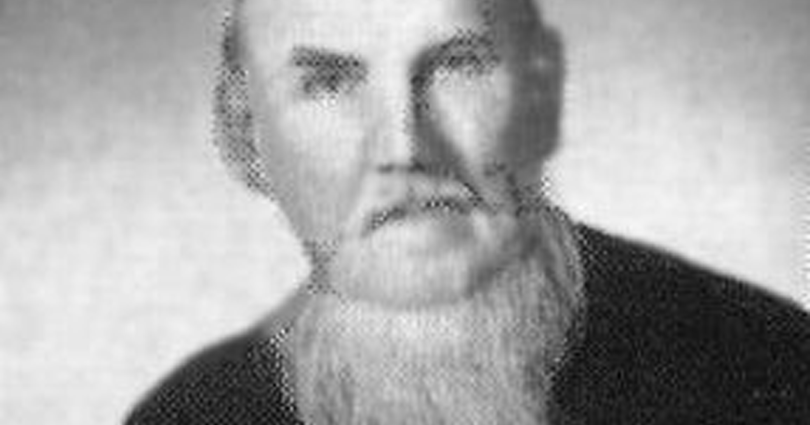
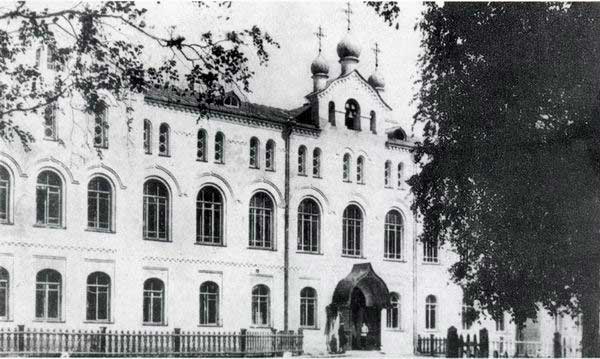
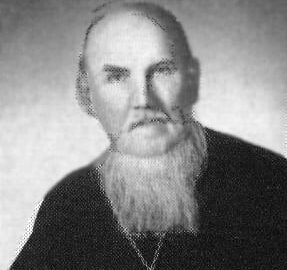
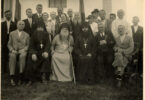
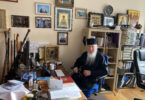
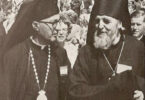
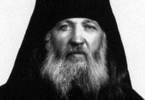
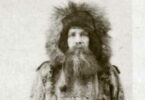
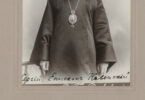
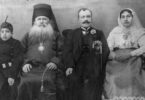
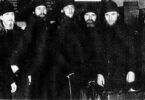
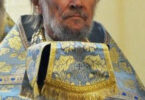
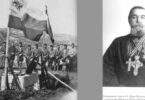
Thank you so much for this detailed and interesting article. It somewhat clarifies the brief statement in Kostriukov’s excellent history of ROCOR regarding the Synod’s refusal to accept Bishop Pavel [Русская Зарубежная Церковь в 1939—1964 гг, pp.120-121]. He certainly sounds like a wonderful and interesting man and this article has inspired me to know more. Thank you.